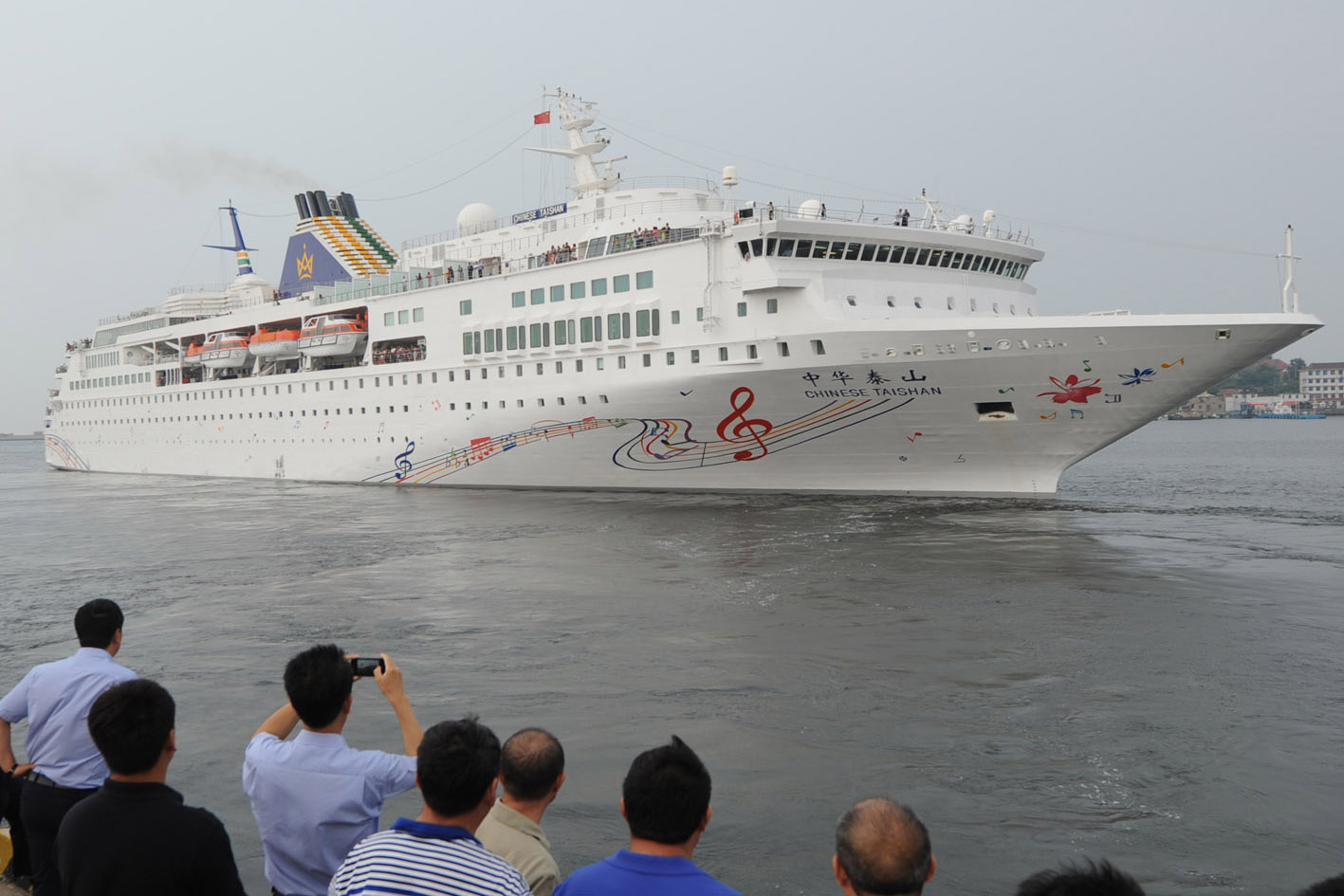
The Chinese Taishan cruise ship departs for Inchon, South Korea, from Yantai, Shandong province. Taking a cruise has become increasingly popular among Chinese vacationers.[Photo/China Daily]
With the rise of the Chinese middle class, the nation’s cruise market will continue to grow, and is expected to become the Asia’s largest market by 2020, industry sources said.
Data recently released by the Cruise Lines International Association showed the Asian cruise industry is experiencing double-digit growth in cruise ships, passengers and ports, with China playing a significant role in this region.
Cruise lines hosted nearly 1.4 million Asian vacationers in 2014, a 34 percent compound annual growth rate since 2012. And from 2012 to 2014, the number of Chinese passengers grew 79 percent per year. In 2014, the number of Chinese passengers reached nearly 700,000, almost as many passengers as all other Asian markets combined, according to CLIA.
More than 40 percent of Chinese cruise passengers were aged under 40.
Asia will see a “record-breaking year” in 2015 with more travelers cruising the region than ever before, said Adam M. Goldstein, global chairman of CLIA.
He said that an increasing number of cruises with experiences tailored to Asian travelers are being offered by the global cruise industry.
Taking a cruise has become increasingly popular among Chinese people. Industry insiders said that compared with passengers in Europe and the United States, Chinese passengers are younger and prefer to take cruises with their families.
A cruise tourism survey by the country’s popular travel website Qunar.com said more than half of those polled would spend 4,000 yuan ($645) to 6,000 yuan on cruises. Meanwhile, Shanghai has become the city with the most people buying cruises in the country, followed by Beijing, Hangzhou and Tianjin.
Seeing the great potential in the China’s cruise market, international cruise companies have stepped up their presence in the region with a series of moves, such as increasing the number of cruise ships, adding more routes and improving the frequency of sailings.
Michael Thamm, chief executive officer of the Costa Group, said it will work to occupy the leading position in the cruise market in China “with a wide variety of innovations and strong growth”.
So far, about 40 percent of bookings in the rapidly growing Chinese market are made for Costa ships, according to the company.
On March 1, Costa Group launched its first 86-day round-the-world cruise for Chinese passengers with the voyage of the Costa Atlantica. And as early as this month, the Costa Serena will be the third Costa vessel offering cruises from China
Last year, Royal Caribbean Cruises Ltd and Ctrip.com International Ltd announced the forming of a strategic partnership through SkySea Cruises, a joint venture which is designed to serve the Chinese cruise market.
The joint venture was “an important strategic move in the company’s expansion efforts in the Chinese market”, said Richard D. Fain, chairman and chief executive officer of Royal Caribbean Cruises Ltd.
Meanwhile, China is also working on developing more luxury cruise ships. The China State Shipbuilding Corporation announced it would establish a joint venture with US cruise company Carnival Corp to build China’s first luxury cruise ship.
Hu Wenming, chairman of CSSC, said the country needs about 50 luxury cruise ships and the number will continue to rise in coming years with the emergence of the middle class.
The Ministry of Transport data show China will become the largest cruise market in the Asia-Pacific region by 2020 with Chinese passenger numbers reaching 4.5 million.
Chinese overseas tourism tops 100 m mark in 2014
In 2014, the number of Chinese tourists traveling abroad increased by 19.5 percent year-on-year to 109 million, topping threshold of 100 million for the first time in history, according to the China National Tourism Administration.
“China has been the world’s largest outbound market since 2012,” said the Madrid-based United Nations World Tourism Organization.
During the recent Chinese Lunar New Year holiday, 5.18 million Chinese, 10 percent more than in the previous year, took trips to Thailand, Japan, the United States, and countries in Europe where they were not surprised to see Mandarin-speaking staff in shopping malls and Chinese TV programs in hotels.
“Now the whole European industry pays great attention to Chinese tourists’ shopping habits and consumption demand,” said Yu Jin, the chief operations officer of Caissa Touristic AG in Hamburg.
At 12 of its retail outlets across Europe, London-based McArthurGlen Group launched a series of promotions during the Lunar New Year holiday, advertising in Chinese social media and providing extra discounts at its stores.
In New York, high-end department store Bloomingdale’s put up decorations featuring a giant Chinese coin towering above a blanket of red flowers.
In Berlin, the Arkaden shopping mall in Potsdamer Platz cooperated with the China Cultural Center in Berlin to host an exhibition of Chinese handicrafts and art performances.
It was not always like this. Shi Xiang, director of CNTA in Frankfurt, could still remember when Western countries showed a lack of interest in Chinese tourism promotion in the early 1980s.
“It was a one-way road back then,” Shi said. “There was only inbound tourism in China. They (Western officials) thought we were appealing to them for customers and money.”
“Now it’s the opposite,” he added. “They welcome the 100 million Chinese tourists who contribute to their economy.”
Data from CNTA showed the number of Chinese tourists traveling abroad in 2014 was nearly 13 times the level in 1998.
“Chinese customers have a very strong purchasing power,” said Sonja Roessler, the tourism marketing executive of McArthurGlen’s Designer Outlet Berlin, adding that the shopping center would analyze how to improve its services for Chinese customers in the future.
“China is a huge market with great potential for Germany, and contributes the fastest growth of tourists from Asia,” said Jia Xiaoli, media manager at the German National Tourist Board.
